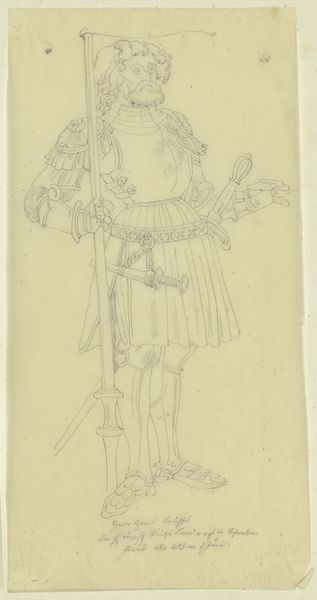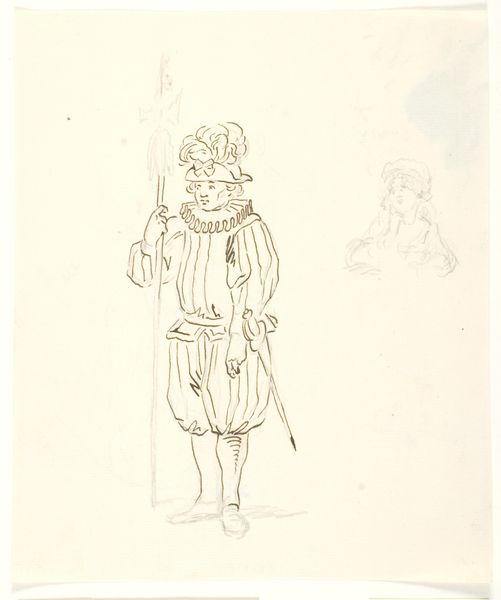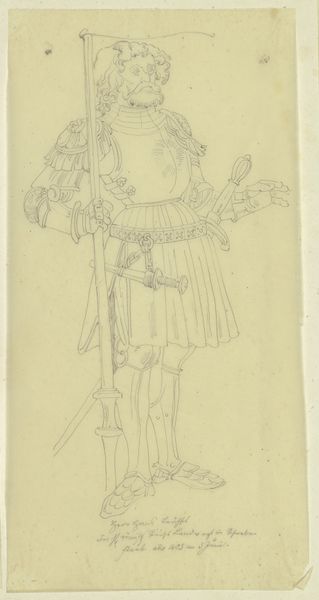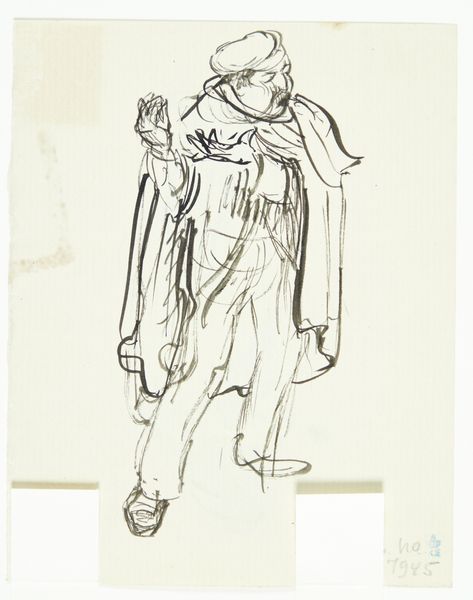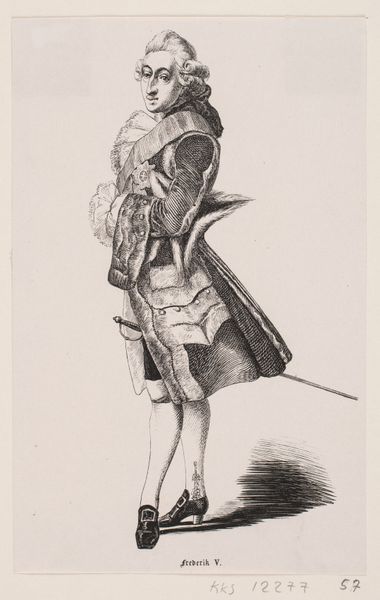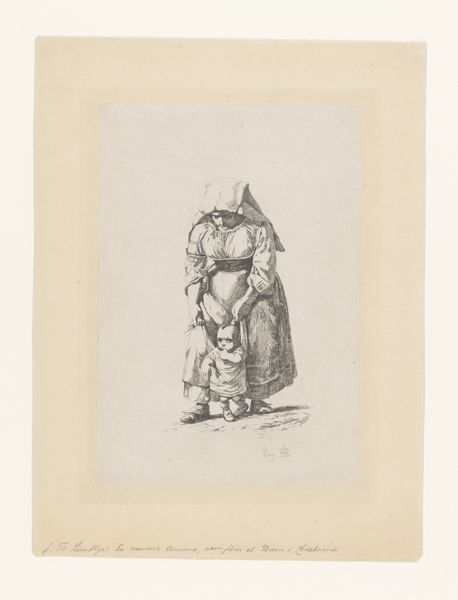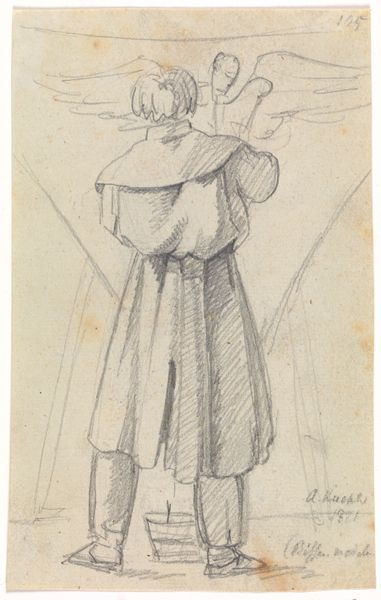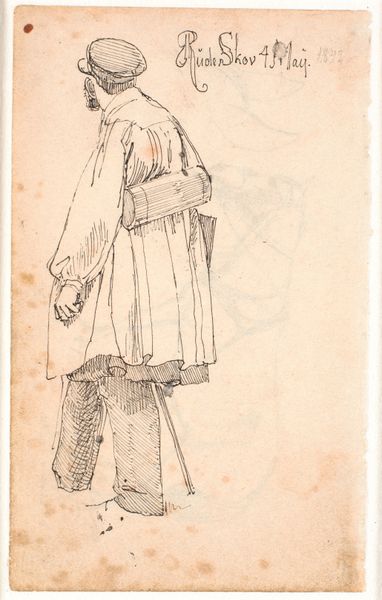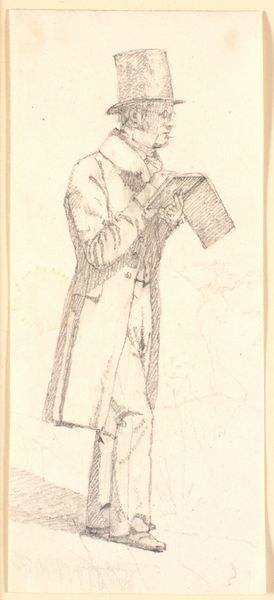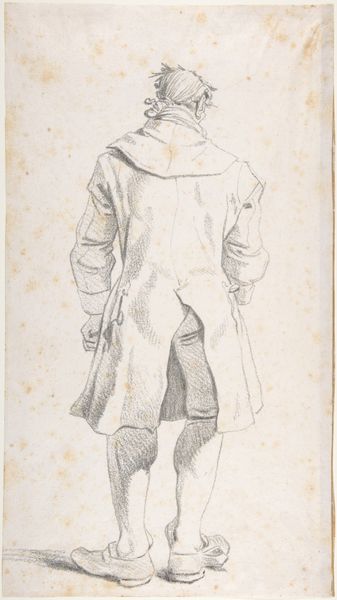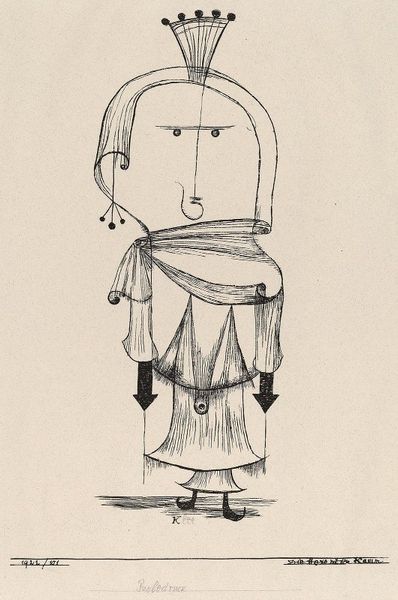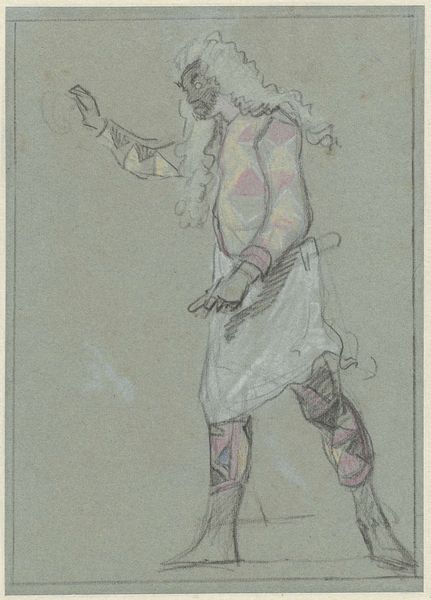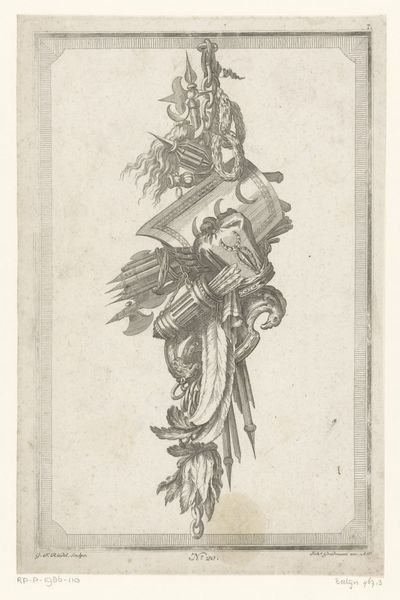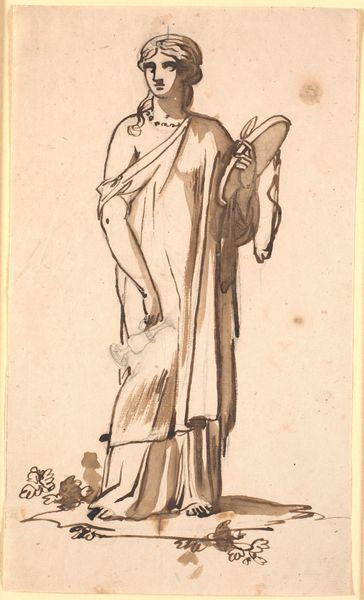
drawing
#
portrait
#
drawing
#
academic-art
#
realism
Dimensions: 216 mm (height) x 167 mm (width) (bladmaal)
Curator: Here we have Martinus Rørbye's drawing from 1835, titled "Woman from the Outskirts of Thebes." It's currently part of the collection at the SMK, the National Gallery of Denmark. Editor: There's something quietly powerful about this. Despite the simplicity of the drawing medium, the detail in her garments and adornments catches the eye, lending a certain dignity. Curator: Rørbye captures not just a woman but an embodiment of daily life in Thebes, her pose and garments reflecting ancient traditions. It resonates with visual memories of classical antiquity and biblical stories. Note her gaze is modest but not subservient. She bears her burden with grace, suggesting endurance and perseverance. Editor: I’m more struck by the means of production and circulation. As a drawing on paper, likely graphite or chalk, this piece points to Rørbye’s own journey, sketching practices, and artistic labor involved in rendering everyday life in distant places like Egypt during a period of intense imperial activity. How was this image consumed back home in Denmark? Curator: Absolutely. We might imagine the image as a romantic window onto a distant world, but let’s not forget that it’s also imbued with symbolism of purity and labor. Water, after all, is a potent symbol across many cultures. The woman embodies the essential role of water bearer, provider, and nurturer, reinforcing traditional roles. Editor: True, but I see her plastered vessels as both a functional and aesthetic statement. Someone shaped, fired, and possibly painted those pots! It would be great to contextualize how it circulated and functioned within Danish society, in the midst of its own colonial endeavors. How many copies were made and distributed, and what sort of knowledge economy did it operate in? Curator: An excellent point about knowledge. What's amazing to consider, perhaps, is its ability to offer a perspective on this subject, even after centuries. Editor: I agree. The simplicity, rendered with such care and intention, allows it to transcend its immediate historical moment.
Comments
No comments
Be the first to comment and join the conversation on the ultimate creative platform.
